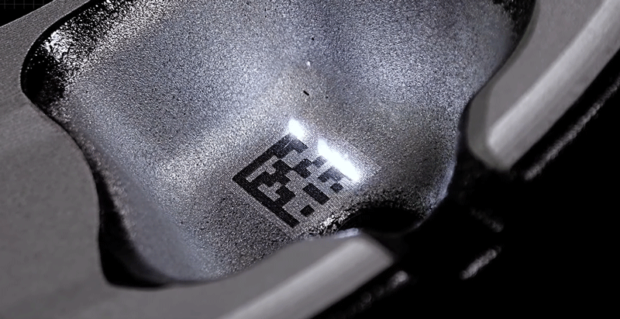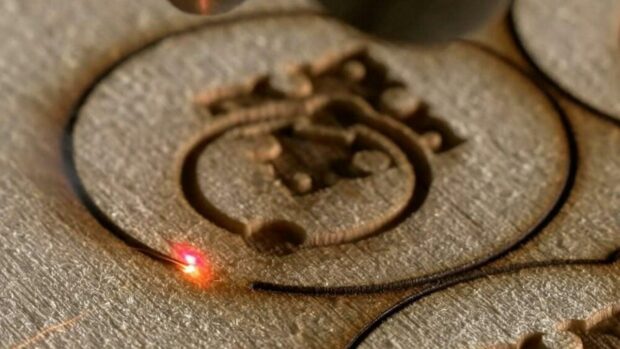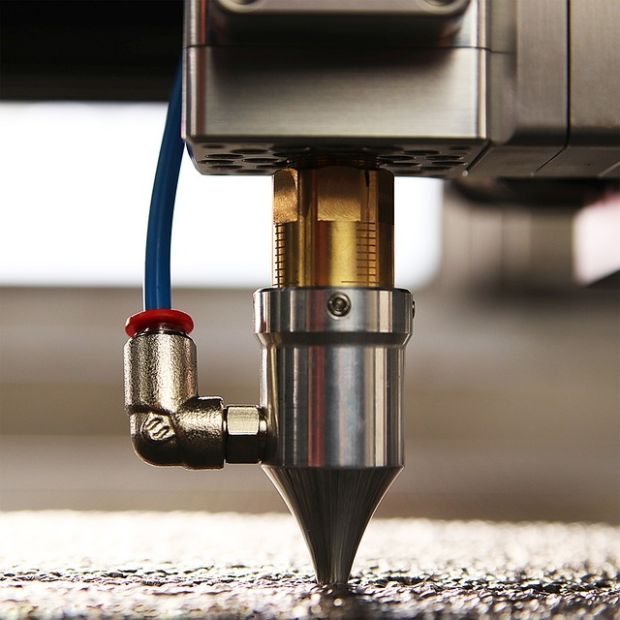Engraving and etching are two different methods. The key difference between etching and engraving is etching only marks the surface, whereas engraving involves deep marks due to deeper incisions.
Engraving and etching are two popular methods engravers use to cut lines through a material’s surface, especially metal.
While both laser engraving and laser etching have similarities, as these are both popular laser marking methods, it’s essential to know what sets them apart.
Below are some of their key differences to know which laser marking process is the right one for you.
Laser Etching: An Overview

While sharp tools are also needed to do laser etching, the process is quite different regarding laser etching.
There are two ways how the etching process works, the first one is called laser etching, and the other one is called chemical etching.
Laser etching, as the name suggests, uses laser technology to cut through the surface of the metal to create a basic image, or what they often call a lasting image.
How laser works are when the laser beam hits the material’s surface with a high amount of energy, the metal surface absorbs this energy and converts it into heat.
As a result, the exposed metal surface melts, expanding the surface of the metal object, and leaving an etch.
On the other hand, chemical etching is a process that uses a chemical substance to dissolve an area around the material surface that will receive the acid bath. This acid bath dissolves the areas where it needs to be designed.
Besides engraving depth and varying width, the main difference between these two processes is that etching is used on wider materials with different thicknesses.
Laser etching is often used for making data matrix codes, barcodes, logos, serial numbers, and many more.
PROS
- Create designs on metals pretty easily
- Very quick process
- Great for small projects and thin materials
- It can be used on many materials
- Extremely precise
CONS
- Not the best durability
- Results can only be achieved using a fiber laser cutting tool
- Only removes the top layer
Laser Engraving: An Overview

Laser engraving is also a printmaking method that uses a special tool called ” burin “ and a soft metal plate to create a design. The metal plate used is typically copper.
Most engravers use this method to cut their desired image onto the metal’s surface plate with varying depths and widths.
The primary difference between etching vs. engraving is that its cuts are deep, producing darker lines and a darker tone than you would normally see from an etching method.
Furthermore, there have been many engraving methods over the years, but using a laser beam is definitely the most widely used one and provides a more detailed and crisp image.
In addition, another main difference between etching and engraving is that engraving is a physical process, whereas etching is a chemical process. It’s why engraving is often used for engraving stainless steel.
The technique traditionally uses a laser beam as a chisel to remove layers on the hard surface. When high heat is generated, it vaporizes the metal’s surface.
As a result, fiber lasers cut through metal surfaces, leaving it with the desired image most engravers are after.
PROS
- A deeper cut provides different tones
- Creates deeper incisions
- High durability due to engraving depth
- Deeper lines provide more ink
- Engraved products can withstand more wear
CONS
- It can only create black marks
- It needs more time and energy
- Limited range of applications
- Less efficient
Etching vs. Engraving: Head-To-Head Comparison
For a more detailed comparison between laser etching and engraving, we’ve made a few aspects of what makes each method superior to the other.
Durability
Laser engraving is the best choice in terms of durability. Both etching and engraving processes are quite different due to their nature.
Laser etching is often done for light commercial and artist purposes but can also include markings of different industrial applications, including other materials too.
On the other hand, engraving is used if you want permanent markings on your products, as the laser beam is responsible for removing layers from the surface of the material.
As a result, it creates more deep lines and will take a significant amount of wear and tear before the design is unreadable, whereas etching metal components are prone to obscuring due to shallow depths.
WINNER: Laser Engraving
Cost Differences
For the most part, engraving is significantly pricier than etching. Although etching and engraving use laser technology, laser-engraved products require more time to be done, which drives up the cost.
Some common factors that can also drive up the price are materials used, production volume, size, depth, and end product design.
WINNER: Laser Etching
Time Taken
While both methods use high heat to make permanent markings on the surface, engraving requires more time as the cutting lines produced are much deeper than laser etching.
However, production time varies a lot depending on a few factors, such as the metal used and size. But laser etching is the speedier choice of the two and is often the preferred choice for the most part.
WINNER: Laser Etching
Application
Both engraving and etching can be used in a wide variety of applications, from small-scale designs to industrial and manufacturing needs.
The project specification greatly influences the driving factor on which method to choose.
Still, these methods are widely used, and their application varies greatly.
In application, we feel one method isn’t superior to the other.
For example, etching is often used in jewelry and light commercial purposes, whereas engraving might be less efficient, but it is the choice in terms of durability.
As a result, engraving is commonly used for objects and metals that are bound to experience more wear and tear and other post-process treatments.
Winner: It’s a tie

Frequently Asked Questions (FAQs)
If you have further questions regarding engraving/etching, you might find them below.
What Is the Difference Between Etching and Intaglio?
There’s no difference between the two. In fact, intaglio means “incising” in Italian, which also follows the same concept of etching.
Etching is a part of Intaglio Printmaking. Intaglio includes processes like engraving, etching, aquatint, and drypoint, to name a few.
The method is different from relief printmaking as this method usually involves the image being raised from the surface.
Why Is Hand Engraving More Expensive Than Etching?
Hand engraving is more expensive than etching because it requires an artisan to have a decade-long experience to master this craft.
The nature of producing a more detailed engraving through a hand and a sharp tool requires a high level of skill that you wouldn’t normally find in a traditional laser engraving company.
Engraving wood is also a popular method done by engravers. But it’s not the best material, as it’s not durable enough as most metals and is prone to chipping.
Is Engraving and Etching Permanent?
Theoretically, engraving metals should be permanent, especially when using a laser machine to do the engraving.
On the other hand, a laser etch is also “theoretically permanent.” However, the non-invasive nature of this method means these markings can’t stand the test of time if it goes through the rigors of wear and tear.
What Industries Use Etching and Engraving?
As mentioned, etching and engraving metals are widely used in industrial applications. Here are some industries that use both of these methods:
Automotive Industry
Primary Metals Industry
Medical Device Manufacturers
Construction Industry
Electrical Industry
Final Verdict: Which Laser Engraving Process Is Best to Use?
Use the Laser Etching Process If…
- You want the faster method.
- You want a cheaper approach as it uses less energy and money
- You are dealing with any metal except stainless steel
- You are using laser marking
Use the Laser Engraving Process If…
- You are dealing with stainless steel or aluminum
- You are doing shot blasting and sandblasting
- You prefer durability over speed
Conclusion
Laser etching and laser engraving are two different methods with similar techniques widely used in industrial applications.
Thankfully, various tools have become versatile enough to do these processes without causing many problems.
We hope this guide will help you choose the best process between laser etching and laser engraving processes.


